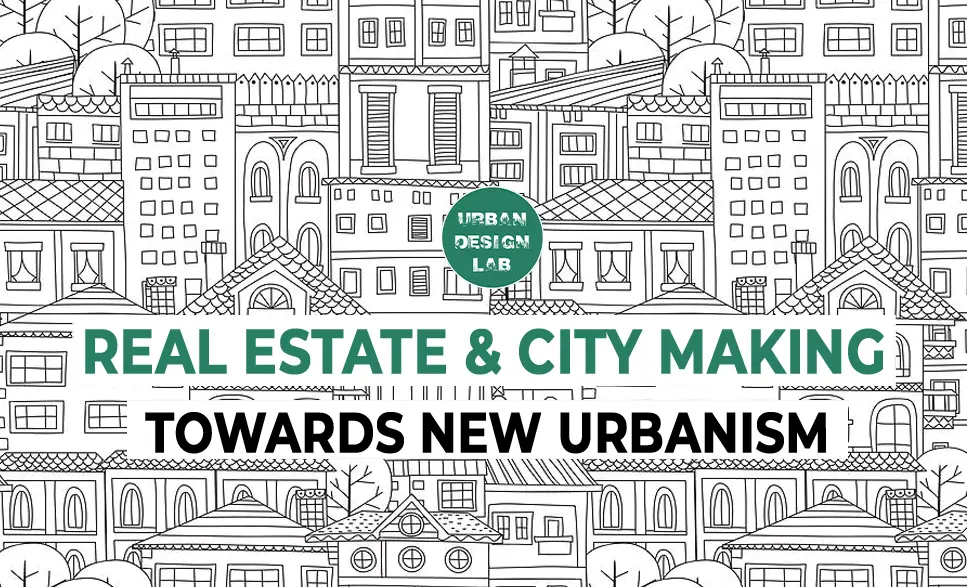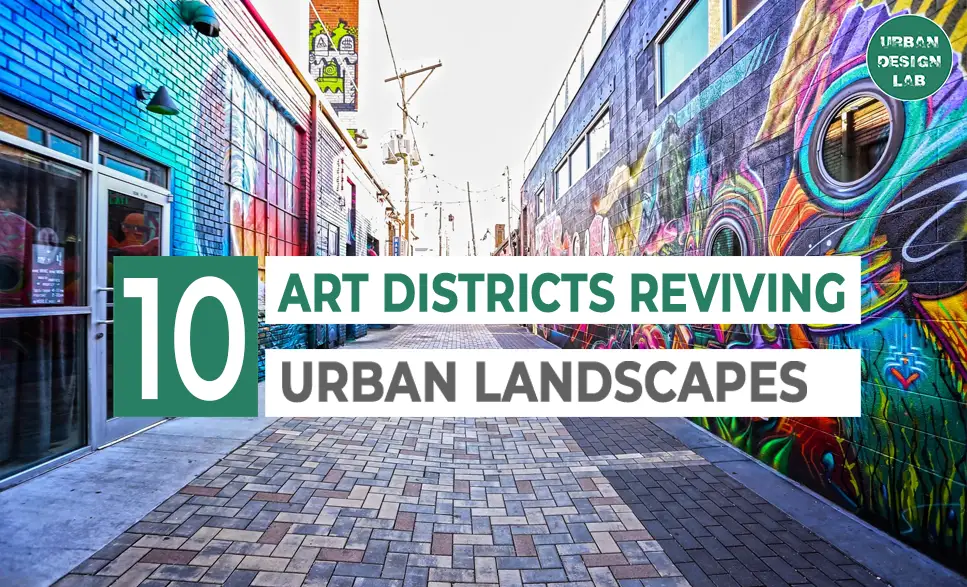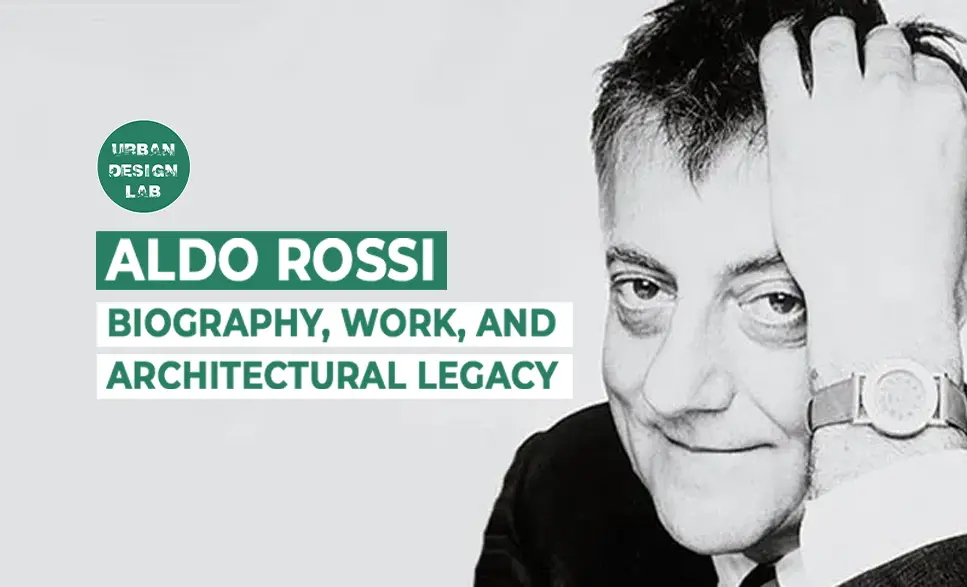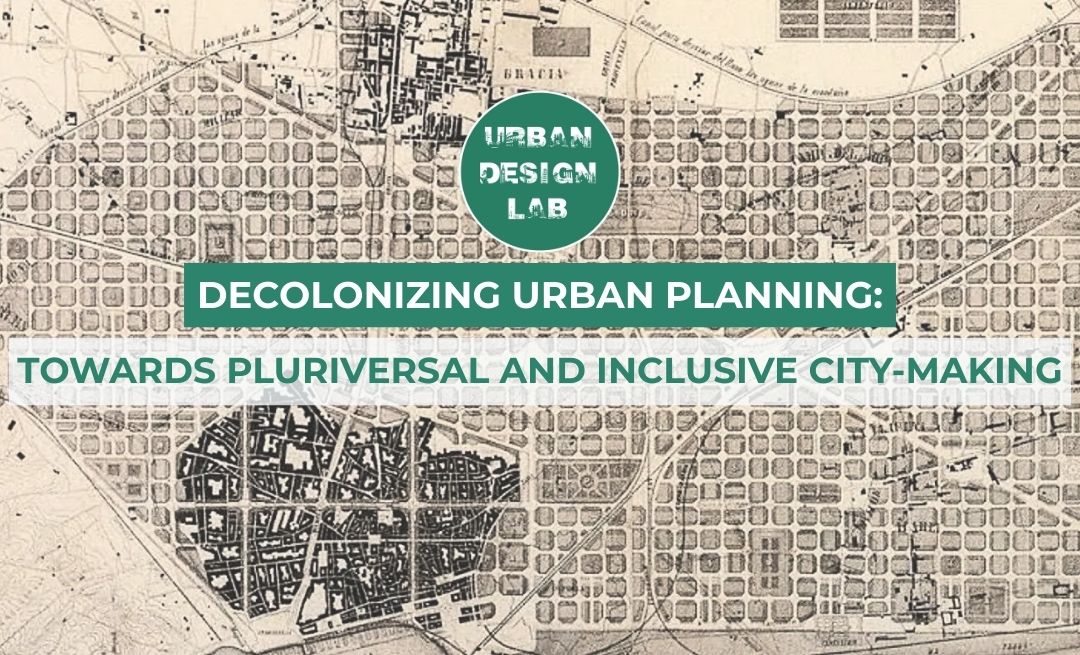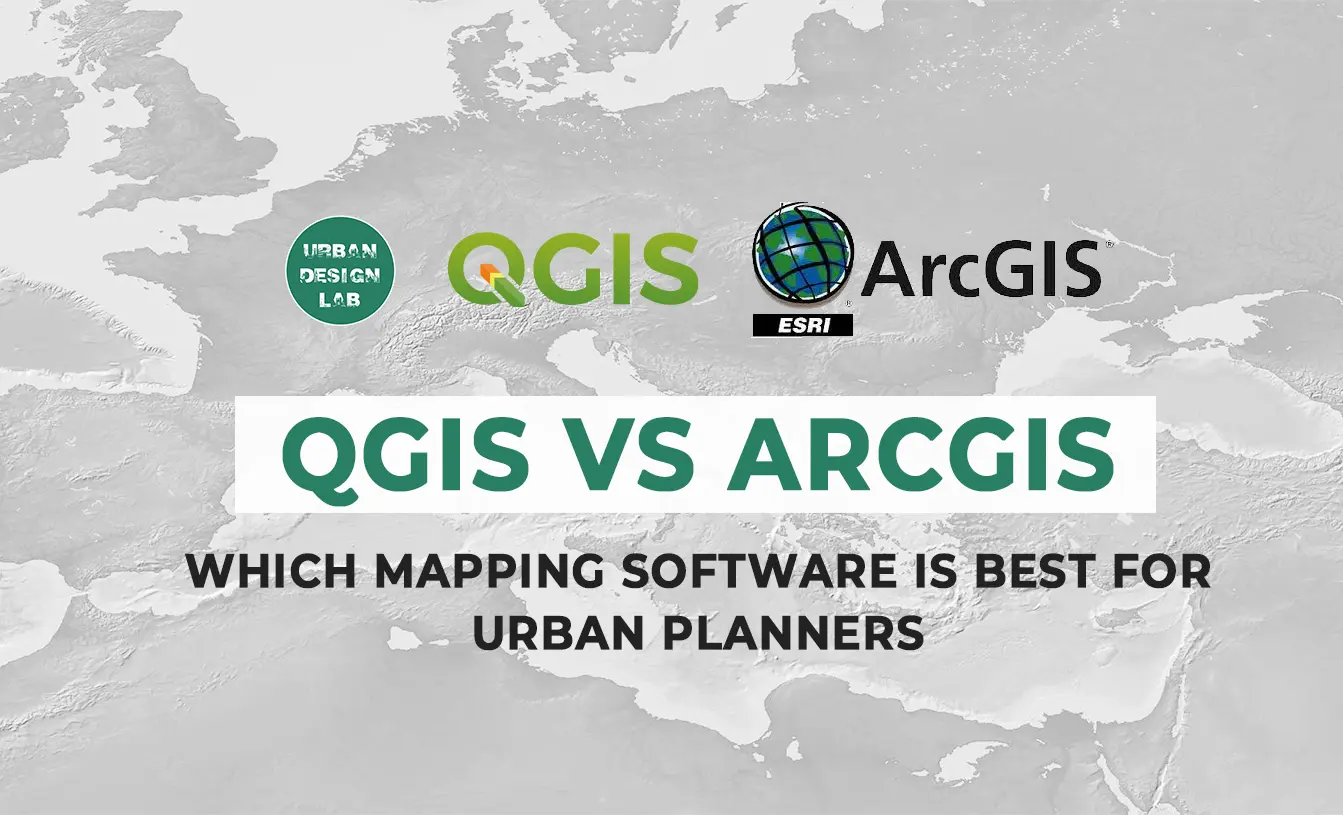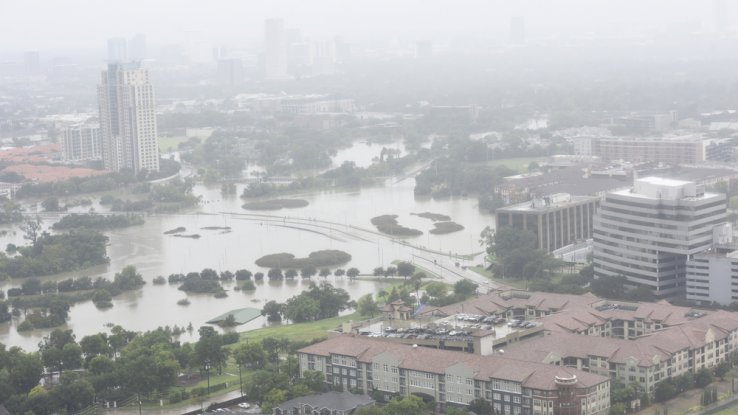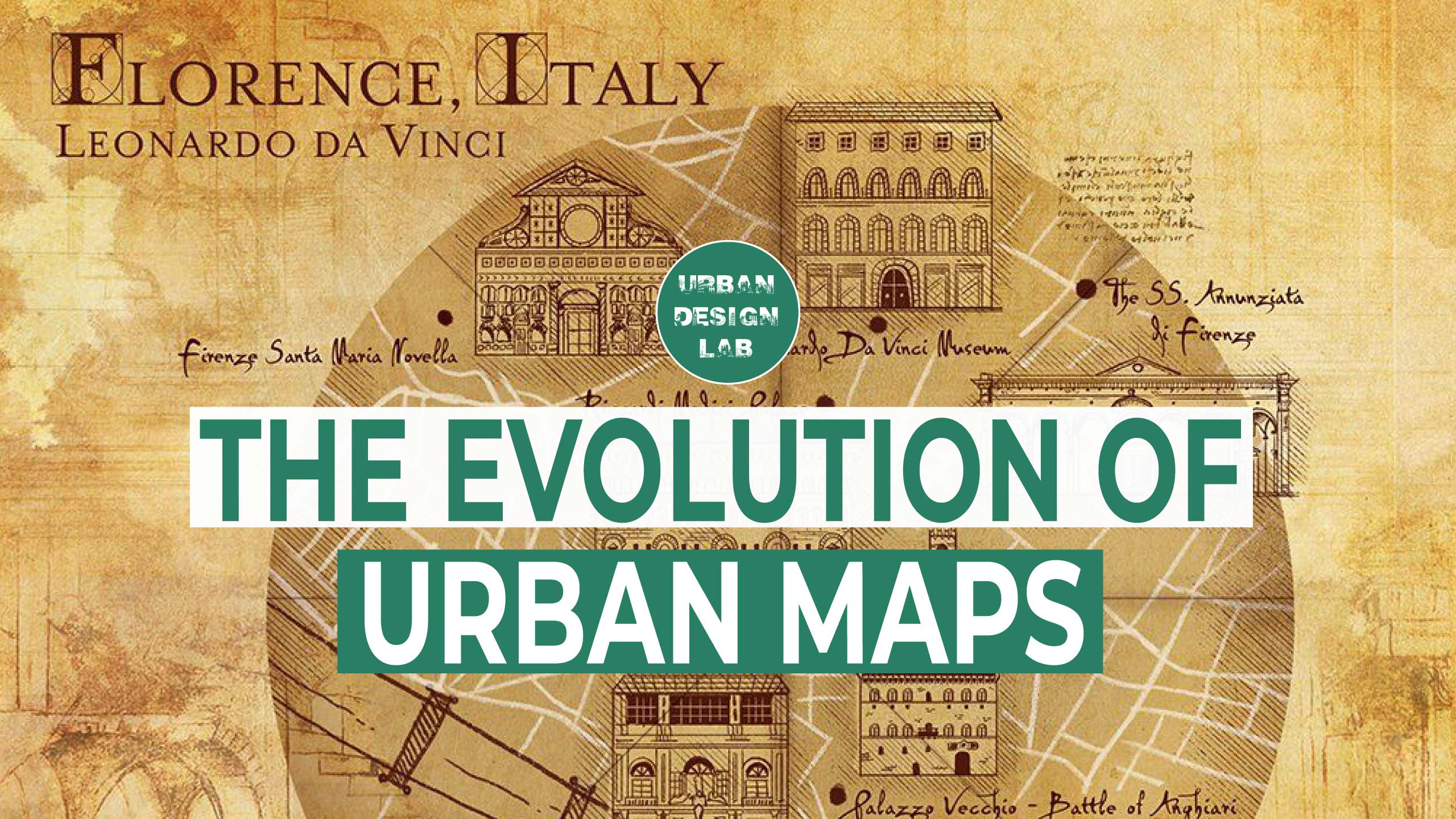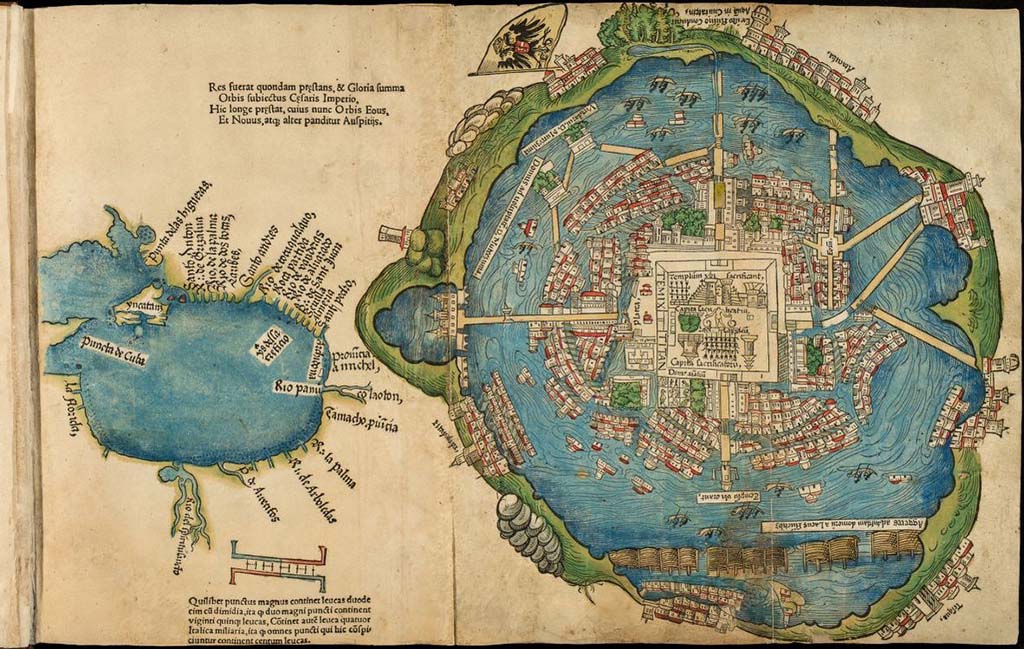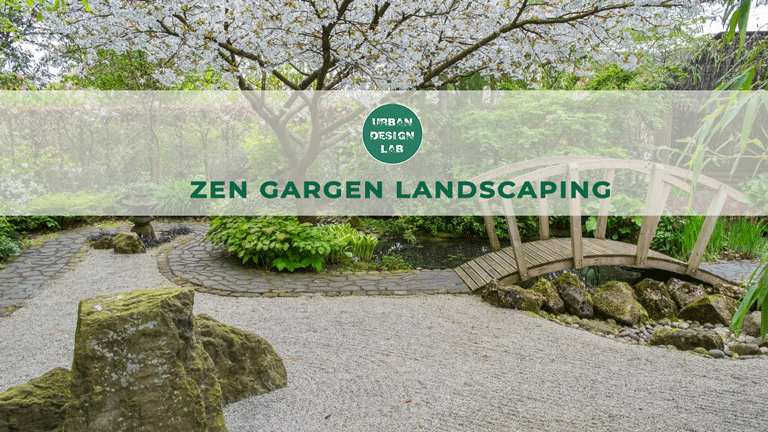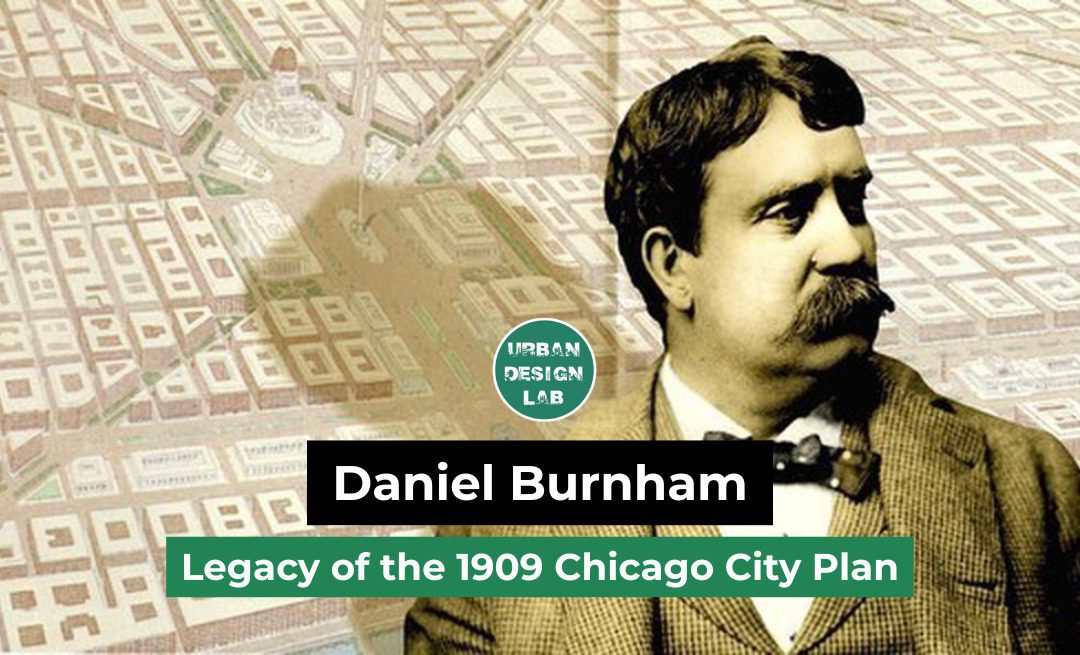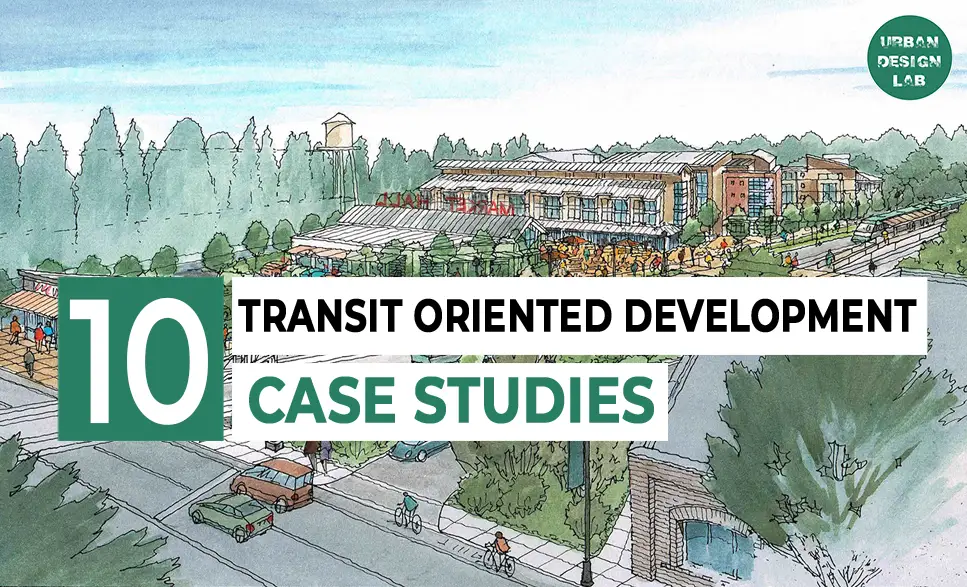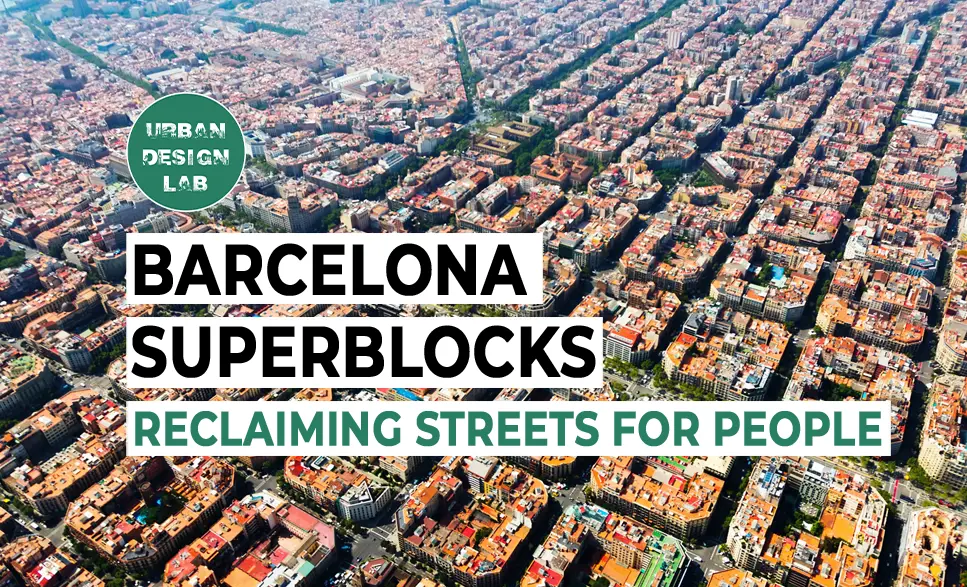
Floating Oasis: Pier 55 by Heatherwick Studio in New York City

The concept of floating oases represents a groundbreaking approach to urban development, blending nature with the built environment to create unique recreational and ecological spaces. Typically built on water, these innovative structures integrate green landscapes with urban settings, providing essential natural areas in densely populated cities. Floating oases serve multiple purposes: they offer recreational spaces for residents and visitors, support environmental sustainability, and enhance the aesthetic appeal of urban waterfronts. The core idea is to maximize limited urban space while promoting ecological balance. By constructing parks and gardens on platforms supported by pilings or other structures, cities can create new green spaces without occupying valuable land. These oases often feature diverse plant species, walking paths, and performance areas, encouraging community engagement and social interaction. Additionally, they can help mitigate urban heat island effects and improving air quality. This article explores the captivating story of Pier 55 or Little Island, a visionary project that has transformed the New York City skyline. We’ll delve into its conception, groundbreaking design, commitment to sustainability, and the challenges it overcame to become a vibrant public space.
A Dream Takes Root: The Birth of a Pier 55
Pier 55, now known as Little Island was envisioned by Barry Diller and Diane von Furstenberg to transform a neglected part of the Hudson River into a vibrant public space. They enlisted Heatherwick Studio, known for its innovative design approach, to realize their ambitious vision. The studio’s blend of art, nature, and engineering, supported by extensive research and community engagement, shaped the project.
The journey to create Pier 55 faced significant obstacles. Legal battles and environmental opposition argued the project would harm the river’s ecosystem, causing prolonged court delays. Securing permits and approvals from various governmental bodies was complex and time-consuming. Financial challenges also arose, despite substantial personal investment from Diller and von Furstenberg, with escalating costs raising feasibility concerns. Unique engineering challenges of constructing a floating park on the Hudson River required advanced solutions, complicating the project further.
Despite these hurdles, supporters remained dedicated. Their perseverance and collaborative effort paid off when Little Island opened to the public in 2021. Today, the park stands as a testament to vision and resilience, serving as a cherished urban oasis that enriches New Yorkers’ lives, embodying the creativity that transformed a bold dream into reality.
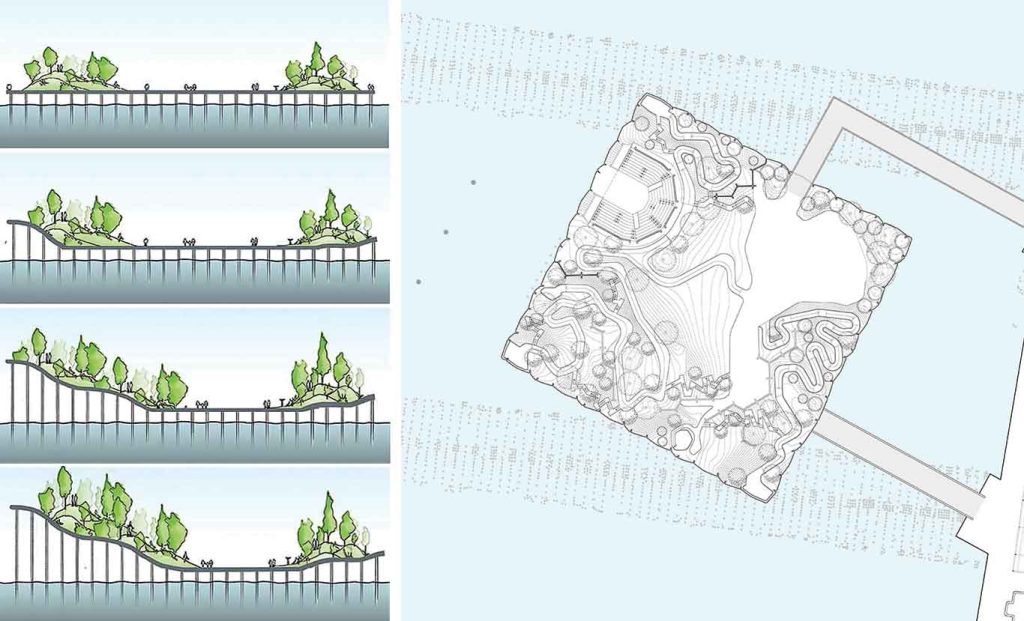
A Design Marvel: Engineering Nature
Heatherwick Studio, approached Pier 55 with a unique vision. Rather than a traditional pier structure, they envisioned a living, organic form that blends seamlessly with its surroundings. This resulted in a stunning landscape of rolling hills, meadows, and groves, appearing to float on concrete “petals.” The park’s foundation comprises 132 tulip-shaped concrete piles of varying heights, supporting a deck that undulates and curves to create dynamic, inviting spaces. The topography is designed to offer visitors a variety of experiences, from intimate seating areas to expansive vistas of the Hudson River and the city skyline. This innovative design exemplifies the environmental pillar of sustainability, as the park’s integration with the natural environment, use of sustainable materials, and contribution to biodiversity are key components. Additionally, Little Island demonstrates the economic pillar through job creation and boosting local tourism. Transforming this dream into reality required an extraordinary feat of engineering. The structure had to withstand the forces of the Hudson River, ensuring the safety of visitors while maintaining a visually striking aesthetic. The team employed cutting-edge technology and materials to create a resilient and sustainable foundation for the park.
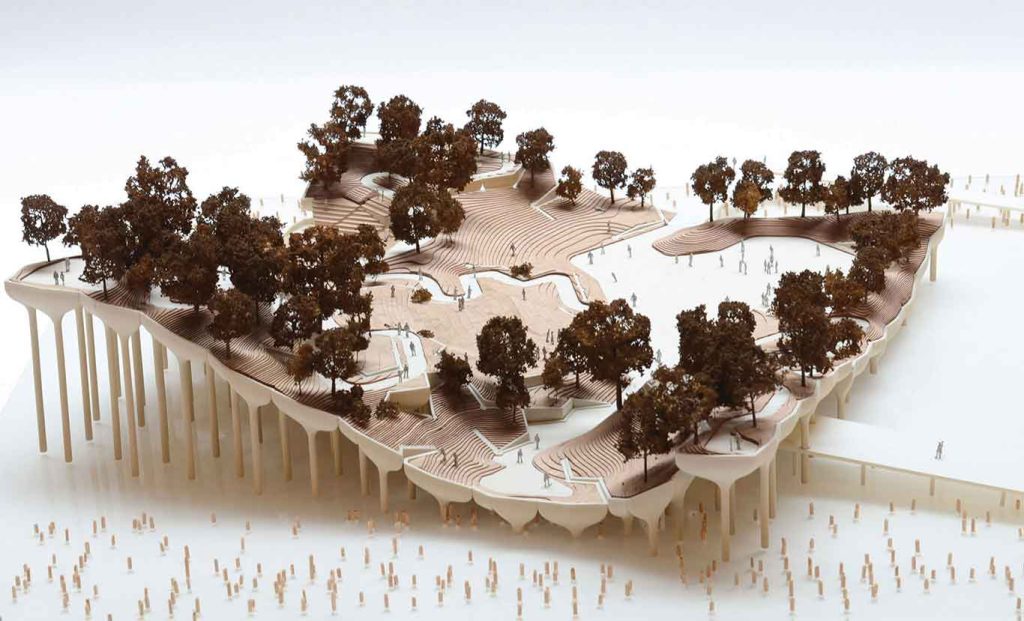
Source: Website Link
A Garden in the Sky: Nature's Oasis
Pier 55 is more than just a park; it’s a horticultural masterpiece. Over 400 different species of trees, shrubs, and flowers have been carefully selected to thrive in the harsh urban environment. The planting design is as intricate as the park’s structure, with layers of vegetation creating a rich and diverse ecosystem. Visitors can wander through fragrant gardens, discover hidden nooks, or simply relax on the sprawling lawns.
The park’s commitment to sustainability is evident in every aspect of its design. From the use of recycled materials to the implementation of green infrastructure, it strives to minimize its environmental impact. The floating structure itself is a testament to innovative engineering, as it was designed to withstand the rigors of the Hudson River while providing a stable platform for the park.
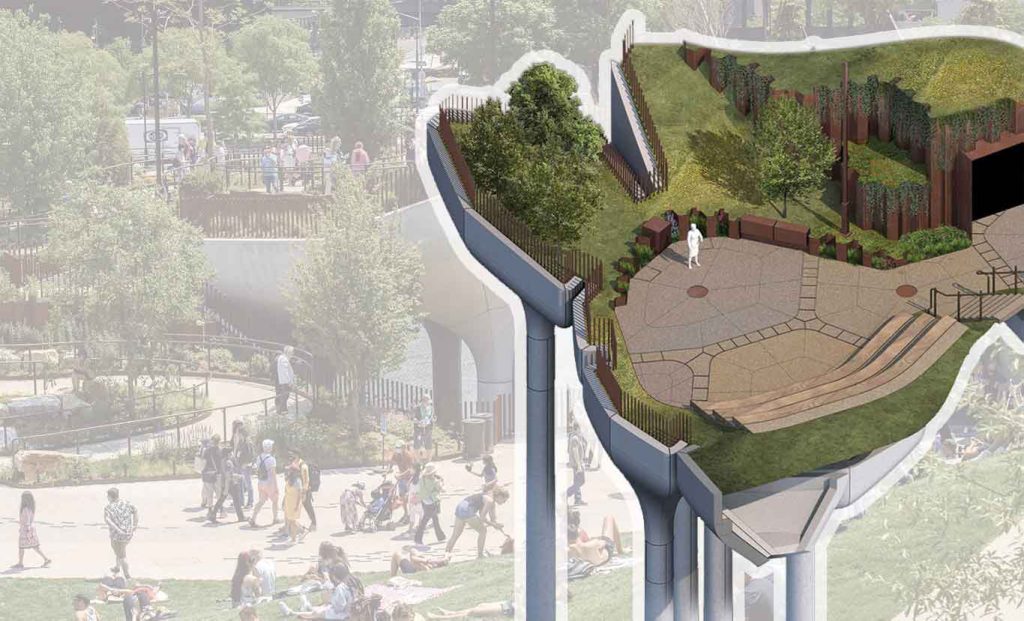
Source: author
A Cultural Hub: Where Art Meets Nature
Beyond its natural beauty, Pier 55 is a thriving cultural destination. The park features two outdoor performance spaces, a larger amphitheater and a more intimate stage, which host a diverse range of events, from music and theater to dance and comedy. The Community Ticketing Program ensures that a wide range of New Yorkers have access to these performances, making Little Island a truly inclusive space.
In addition to its performance venues, the park offers a variety of amenities for visitors to enjoy. There’s a charming café, a children’s play area, and ample seating for picnicking or simply soaking up the sun. Pier 55 has quickly become a beloved gathering place for locals and tourists alike, providing a much-needed respite from the frenetic pace of city life.
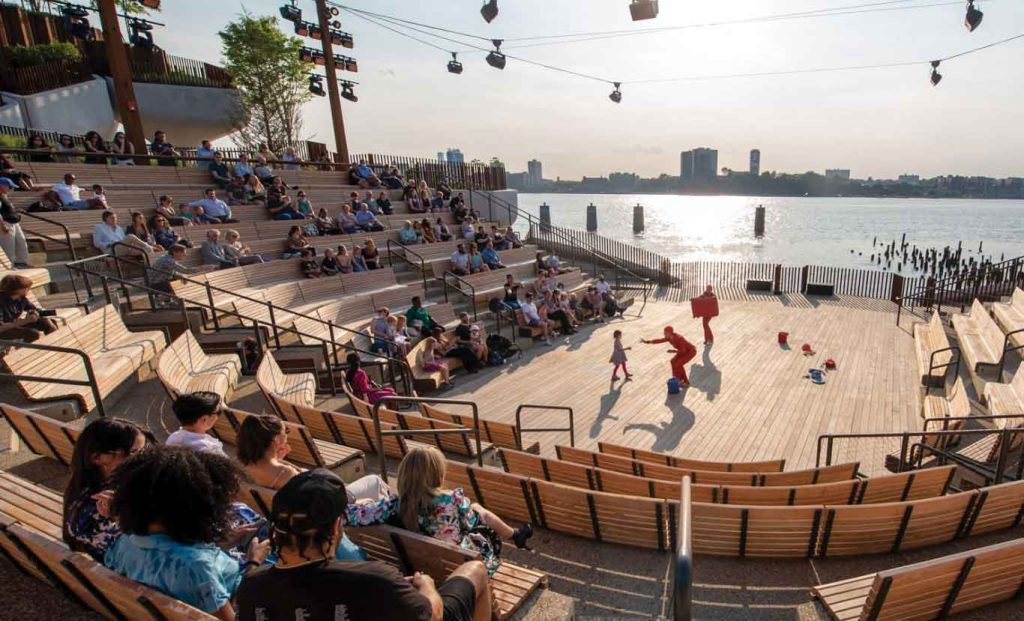
Navigating the Challenges: Environmental, Economic, and Social Hurdles’
The development of Pier 55, faced a complex array of environmental, economic, and social challenges that required careful consideration and strategic planning.
Environmental Challenges
1. Ecological Impact: Potential disruption to aquatic life and ecosystems.
2. Water Quality: Concerns about pollution and contamination of the river.
3. Climate Change: Vulnerability to rising sea levels and extreme weather events.
Economic Challenges
1. Financial Sustainability: High construction and maintenance costs.
2. Revenue Generation: Dependence on public funding and limited commercial opportunities.
3. Economic Impact: Challenges in measuring the economic benefits to the surrounding community.
Social Challenges
1. Community Engagement: Balancing the needs of local residents with the desires of tourists.
2. Accessibility: Ensuring the park is inclusive and accessible to people of all abilities.
3. Safety and Security: Protecting visitors and the park from crime and vandalism.
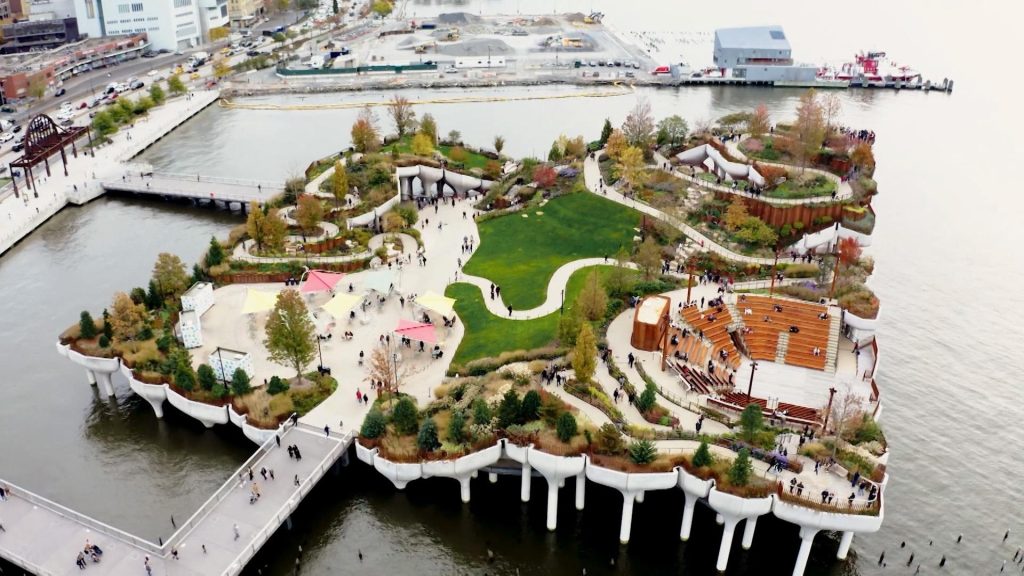
Floating the Future: Expanding Horizons
Floating structures are poised to revolutionize urban landscapes, offering innovative solutions for recreation, community engagement, and environmental sustainability. As we look ahead, the evolution of these structures will be driven by advancements in technology, sustainable design, and public education.
Key areas of development include:
1. Innovation and Technology: Advancements in floating structure technology and sustainable materials will be key, including improved buoyancy systems, renewable energy integration, and innovative mooring and anchoring solutions.
2. Replication and Scaling: Sharing knowledge and best practices through collaborative platforms and cross-city partnerships will facilitate the replication and scaling of floating parks globally.
3. Monitoring and Evaluation: Continuous monitoring and evaluation of performance indicators, structural integrity, and environmental impact will inform necessary adjustments and improvements.
4. Educational Outreach: Using the floating park as a platform for interactive environmental education and awareness will inspire visitors to become active stewards of the environment.
Conclusion
Pier 55 stands as a testament to the power of human ingenuity, innovation, and resilience. It is more than just a park; it’s a living, breathing organism that has transformed a derelict pier into a vibrant heart of the city. By seamlessly integrating nature, culture, and sustainability, Pier 55 has set a new standard for urban development and public space design.
As a model of sustainable urban living, Pier 55 demonstrates how cities can balance economic growth with environmental responsibility. Its success underscores the importance of investing in green spaces, fostering community engagement, and prioritizing the well-being of citizens.
As the world grapples with the challenges of climate change and urbanization, Pier 55 offers a beacon of hope and inspiration. It proves that with vision, determination, and a commitment to sustainability, it is possible to create thriving urban environments that enhance the quality of life for all. Pier 55 is not merely a destination; it’s a catalyst for change. It invites us to reimagine our relationship with nature and our cities, inspiring us to build a more sustainable and equitable future for generations to come.
References
- ArchDaily. (n.d.). Pier 55 | Tag. Retrieved from https://www.archdaily.com/tag/pier-55
- Dezeen. (2023, May 10). Little Island park and theatre by Thomas Heatherwick opens in New York. Retrieved from https://www.dezeen.com/2019/11/13/heatherwick-studios-pier-55-renamed-little-island/
- Heatherwick Studio. (n.d.). Design & Architecture | Little Island. Retrieved from https://heatherwick.com/project/pier55/

Reem Farghaly
About the author
Reem Farghaly is an enthusiastic architect who graduated in 2023 from the Arab Academy for Science, Technology and Maritime Transport. She commenced her postgraduate studies the same year, driven by a strong passion for research and reading. Reem is particularly interested in urban design and architecture. Keen on gaining knowledge within the field, she is committed to exploring innovative solutions and advancing her expertise in architectural design and sustainability.
Related articles


Architecture Professional Degree Delisting: Explained

Periodic Table for Urban Design and Planning Elements


History of Urban Planning in India
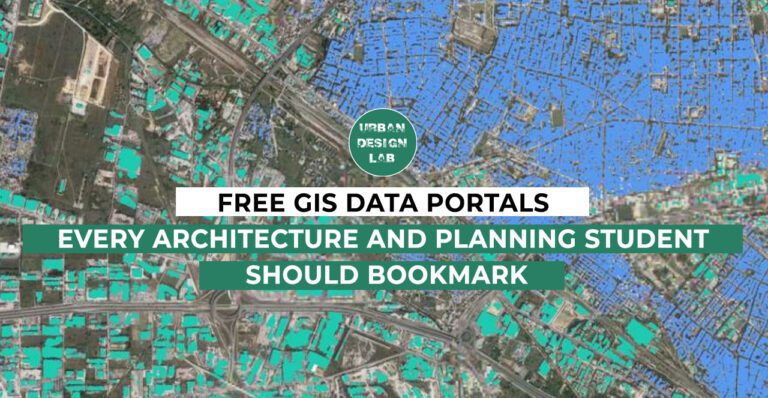
UDL Illustrator
Masterclass
Visualising Urban and Architecture Diagrams
Session Dates
17th-18th January 2026

Urban Design Lab
Be the part of our Network
Stay updated on workshops, design tools, and calls for collaboration
Curating the best graduate thesis project globally!

Free E-Book
From thesis to Portfolio
A Guide to Convert Academic Work into a Professional Portfolio”
Recent Posts
- Article Posted:
- Article Posted:
- Article Posted:
- Article Posted:
- Article Posted:
- Article Posted:
- Article Posted:
- Article Posted:
- Article Posted:
- Article Posted:
- Article Posted:
- Article Posted:
- Article Posted:
Sign up for our Newsletter
“Let’s explore the new avenues of Urban environment together “

























